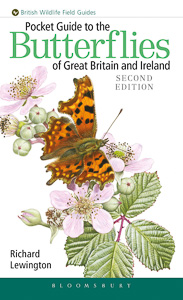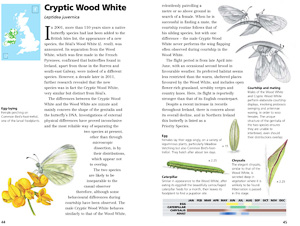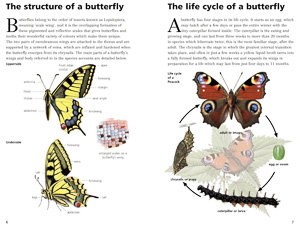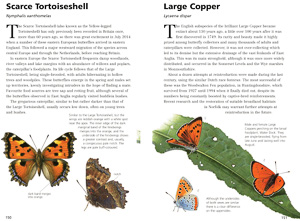 |
by Richard Lewington
From the publisher: This handy pocket-sized book has become the essential guide to identifying the butterflies of Great Britain and Ireland. It contains over 600 superb illustrations of the life stages of each species, together with beautiful artworks of butterflies in their natural settings and pertinent species information, distribution maps and life history charts. A selection of day-flying moths is also included for comparison. Presented in an accessible, easy-to-use field-guide format, this is an ideal guide for beginners, as well as for more experienced butterfly enthusiasts.
This second edition has been fully revised and features a new, illustrated 'at-a-glance' identification guide to species within families, updated distribution maps and species accounts, as well as new spreads and artwork for the Cryptic Wood White and Scarce Tortoiseshell.
With at least three field guides on the market, I was wondering what the second edition of this guide was going to contain that would differentiate it from the pack and, within just a few pages, this became immediately clear; this production has, without question, the best illustrations bar none - there is no better illustrator of the butterflies of the British Isles than Richard Lewington! This really is a beautiful piece of work.
It is also right up to date in terms of the taxonomy (classification) used to organise the various species, as well as the inclusion of recent changes within our butterfly fauna - most noticeably, the recognition of the Cryptic Wood White (found in Ireland) as a new species and, based on sightings as recent as autumn 2014, the Scarce Tortoiseshell as a rare migrant.
 |
The introduction contains the obligatory sections on the structure and lifecycle of a butterfly, before providing a very useful "at a glance" section that will save you from flicking through the rest of the book to help you ID a species.
 |
In the introduction, the author writes: "Opinions differ as to the relative merits of photographs and paintings for identifying butterflies. The variability of photography can lead to confusion, but the use of accurate artwork can pinpoint fine details and differences between similar species and so result in more accurate identification". This is exemplified in the "Extinct species and rare migrants" section toward the end of the guide, where various diagnostics for separating Large Tortoiseshell and our most recent migrant, the Scarce Tortoiseshell, are given. This is just one of many examples and I would have concur that high quality illustrations are far superior (in general) to photographs when used for such purposes.
 |
As far as field (and pocket) guides go, this is one of the easiest to transport being the most compact of those I'm aware of. The price paid for such an easy-to-carry guide is, of course, that there is limited text. Having said that, I did find that the species summaries contained the odd "gem" of information that even experienced butterfliers would learn from. Those wanting to go beyond identification and a limited introduction to each of our species would do well to invest in the author's related (and celebrated) publication, The Butterflies of Britain and Ireland.
In summary, this is a beautiful piece of work and exceeds any expectation that one might have of a pocket guide, and I cannot recommend it highly enough.
The books is available through all good book stores, from online stores, and also the publisher, British Wildlife Publishing.